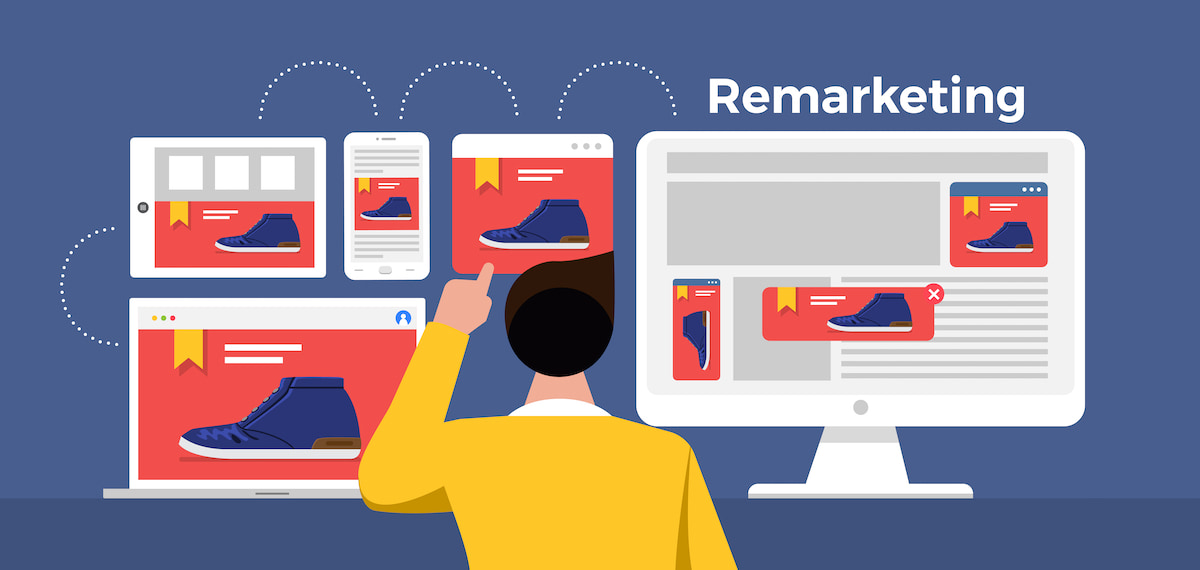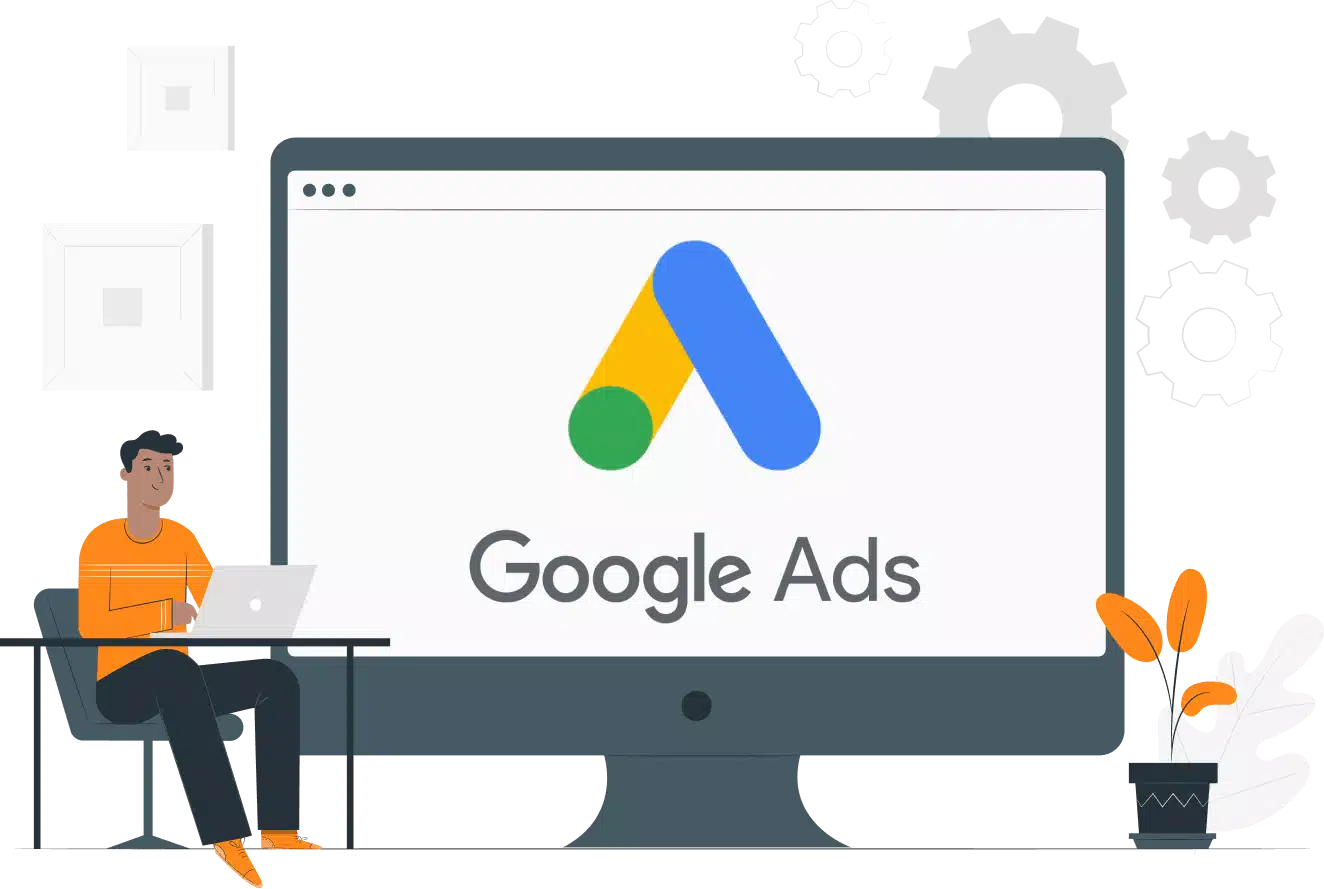How to Maximize Sales For eCommerce with Google Remarketing Ads
Google remarketing ads are a great way to reach people who have already visited your website. This allows you to advertise to people who are more likely to purchase from you instead of advertising to everyone on the internet. This article will cover how Google remarketing works, how it can be used for eCommerce, and some best practices for setting up your first campaign.
Why Google Remarketing Advertising For E-commerce?
It is no news that potential online buyers do not make their orders on the first visit. A larger percentage of those who manage to make orders never proceed to completing their orders and making payment. This could occur for various reasons best known to the buyer, but your concern is Sales, and for you to achieve it, you need to constantly show up before your buyers so that they can always remember your product.
Remarketing Ads is one of the proven methods for you to use in ensuring that potential buyers remember your product through the constant display of adverts across platforms.
In simple terms, remarketing means advertising your products to those who have viewed your product, made orders (both complete and incomplete), or used your mobile application.
Remarketing Ads are used to engage audiences who have viewed, bought, or interacted with your product.
7 Reasons To Use Google Remarketing Ads For Ecommerce

Sale is a process that is complete when payment is made. During visits, most potential buyers are unsure what they want. Frequent views and checks go a long way in helping the buyer conclude.
For these frequent views or checks to be possible, your product needs to be seen everywhere the potential buyer turns and eventually, your product gets selected as the buyer's choice.
Google Remarketing Ads is very important in eCommerce as it does the following for your product:
1- It is easy to set up
Getting started with Google Remarketing Ads is as easy as following the guidelines based on the technique you choose to use.
2- It is cost-effective
There's a high return on investment (ROI) for using the Google Remarketing Ads tools. This means that you spend less to gain more.
3- It connects you to your target audience
There's always an audience for every product; consistency keeps your target audience glued to your product and always in expectation for more.
4- It keeps your product on the mind of buyers
With your product seen constantly across screens or tabs, nature takes its course by making your product remain in the mind of your buyers.
5- It creates brand awareness
Using remarketing ads, make your product appear as often as possible, thereby increasing visibility for your brand.
6- It Increases engagement with your target audience
When a potential buyer views your adverts, it shows that he has some interest in your product but sometimes isn't fully convinced yet. Using Remarketing Ads is a constant reminder for the buyer to take another look at your product.
7- It boosts sales
As your brand becomes visible, your product's popularity increases, and buyers begin to see the need to make it their choice.
How Does Google Remarketing Ads Work?

Google remarketing ads work by placing a cookie on your visitors' computers. This cookie allows Google to track them across their sites and show them targeted advertisements when they visit other websites.
For example, someone visits your website and adds a few items to their shopping cart but doesn’t check out. Google will then show them an advertisement with a discount code or link back to your store while they are browsing other websites.
The benefit of using remarketing ads is that it allows you to reach out to people who have already shown an interest in your product. They've been exposed to your brand and know what it's about, so they are likelier to buy from you again than someone who has never heard of you before.
How to set up Google Remarketing Ads
- Go to Google Tag Manager and create a Google Ads Remarketing Tag
- Select New Tag> Tag Configuration> Google Ads Remarketing
- Fill in the required fields with the Google Ads Conversion ID
- Select Triggering and assign one or more triggers to be fired by the tag
- Save and complete tag setup
- Check browser compatibility to ensure that the conversion linker is being enabled.
- Publish after previewing your setup
5 Ways to Maximize Sales with Google Remarketing Ads

-
Targeting your chosen audience
Targeting your chosen audience Is the first step to maximizing your sales with Google remarketing ads. To do this, you need to create a list of specific criteria that will allow you to target those most likely interested in your product.
For example, if you run an online shop selling women’s clothing, you want to ensure that only women see your ads. You can create a remarketing list based on gender or age range and add it as a custom audience for your ad campaigns. You can target people based on:
- Demographics (age, gender, location)
- Interests (what they like to do in their free time)
- Behavior (if they visit certain websites or apps)
2. Experiment with which banner ads work best
Test different image sizes and ad copy to see what resonates with your audience and produces the most clicks. You can also experiment with different types of targeting, like including a specific product in your advertisement or offering a discount code.
There are many different types of banner ads to choose from, so it’s important to experiment with which ones work best for you. You can use a combination of text-based banners and image banners, or even video ads.
Consider the following when creating your ads:
- Where will they appear? (youtube, Instagram Stories)
- How long should they be? (30 seconds or 1 minute)
- What will people see first?
You have options to:
- Test different headlines and images
- Split test your ads to see what works best (you can do this by creating two identical ad copies, but one with a different image or headline)
3. Create an offer that will compel a second purchase
You want people to buy from you again, so creating an offer that will compel them to do so is important. You could try offering a discount code for their next purchase or including a bonus item with their purchase.
If you’re selling a physical product, try including a special gift. You could also create an exclusive membership club where people can get special discounts and other perks on future purchases.
You could also try offering a free tutorial or course that helps people implement what they learned about in their first purchase. This will help build trust and credibility in your business, making people more likely to buy again from you.
4. Learn from your customer’s behavior - A/B testing & segmentation
Once you’ve built a relationship with your customers, you can start learning from their behavior. Find out what they like and don’t like about your products by running A/B tests or surveys.
For example, you could test different pricing models or see which one sells more products. You can also segment your audience into different groups based on their purchase history and interests to know which types of offers resonate with them the most.
This will give you insight into what kind of people are most likely to buy from you in the future.
Segmentation is another powerful tool that allows you to create user groups based on certain characteristics and then target them with specific content.
If someone has already purchased from you once, they’re more likely to buy again in the future so try segmenting them into a group where they get special discounts or deals on other products.
Display vs. Search Ads for eCommerce Retargeting

The next step is to choose which type of retargeting ad you want to create. The two main types are display ads, which appear on websites and in apps. and search ads, which appear when people search Google or Bing. Both can effectively drive conversions, but they work best with different audiences.
Display ads are best for reaching people who have already visited your website but haven’t made a purchase yet. They can be shown on third-party websites and apps where they’re likely to see them again, giving you another chance to convert them into customers.
Search ads are better at targeting new visitors who haven’t visited your site before. When someone searches Google or Bing for a specific product or service, a search ad will appear in the results pages pointing back to your website.
In addition, display and search ads that display ads can be shown on third-party websites, while search ads only appear on search engine results pages (SERPs).
Discover Display Ads Vs. Search Ads: The Better Ads for Your E-commerce Business
Conclusion
Google Remarketing can be one of the most powerful tools in your marketing arsenal but requires some strategic planning to be effective. Automating is one of the easiest ways to do your remarketing work. AI platforms like ConvertedIn have the technology to automatically gather data about your customers and create the best remarketing campaign across multiple platforms —including Google, Bing, Facebook and Instagram.
With an AI-powered platform in place, you can rest assured that your remarketing campaigns will be successful and save yourself time in the process.
Convertedin is an all-in-one marketing operating system that helps e-commerce retailers use data and shopper insights to increase engagement and sales. Request a demo for free to see how ConvertedIn can help you boost your online store sales.
